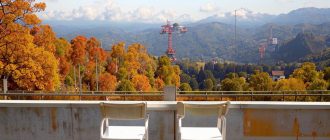
President of Pro-Vision, author of the Vinogradov.story community
“Snowy winter, New Year’s illuminations and the atmosphere of the approaching holidays transform any city – even a city as self-sufficient as St. Petersburg. What the northern capital has prepared for the new winter season and which St. Petersburg locations should not be missed in the next three months, I will tell you below”.
Rinks on Novaya Hollandiya, in Sevkabel Port and Okhta Park
Without exaggeration the main winter amusement of St. Petersburg is ice skating. Since the mid-1860s public skating rinks were organized on the Fontanka, Moika and in the Tavrichesky Garden from the first cold weather.
It is still possible to skate along the rivers and canals of the city today, but those who like quality ice and New Year’s aesthetics will probably enjoy it more on the city’s equipped sites: seaside – in Sevkabel Port on the shore of the Gulf of Finland, urban – in Novaya Holland or forest – in the fabulous Okhta Park.
They all offer the same comfortable level of skiing and apres ski – although “ski”, “skis”, in this case it would be more appropriate to replace it with “skates”.
Arctic and Antarctic Museum
The Arctic and Antarctic Museum on Marata Street is not the most obvious, but definitely the most winter and snowy exposition in St. Petersburg. To be more precise, there are three exhibitions about the nature of the Arctic and Antarctica, as well as the development of the northern sea route. The museum collection includes many interesting things: personal belongings of the conquerors of the poles, archive photos and documents, dioramas and a grandiose model of the Polar Lights.
Winter is the best time to get acquainted with all the expositions: firstly, the museum is very cozy and really “warm”, and secondly, the cold weather outside will help to better understand what it is like to be a polar explorer and constantly struggle with inhuman weather conditions.
St. Petersburg parade rooms
Left as a memory of an era when all life was divided into front and back rooms, St. Petersburg’s front rooms have an incredible appeal. To stumble upon a luxurious front room with a fireplace and a marble staircase is a rare stroke of luck. And to ride in a working pre-revolutionary elevator was a rare thing: such addresses are carefully kept and handed over only in great secrecy.
However, among the front rooms there are also those where guests are welcome. These are the legendary “Chamomile” in the Eliseevs’ house, the House with a rotunda, and the profitable houses on Rubinstein. The flavor of “that very” capital St. Petersburg has been preserved right here – in the front rooms. And it would be a mistake not to look into at least one of them.
Yusupov Palace
The Yusupovs’ mansion on the Moika is called “the palace of palaces” and is often compared to the classics of St. Petersburg imperial ensembles like the Winter Palace or Peterhof – sometimes not in favor of the latter. A little more than a century ago, couples twirled in the Yusupov Palace, elegant conversations were held in the galleries, and in its own home theater the whole light of St. Petersburg gathered – Pauline Viardot shone.
The palace facade, like a luxurious theatrical curtain, lowered to the embankment, concealed one of the most extensive private collections of luxury goods and art. The modern exposition has been replenished with personal belongings of the Yusupovs, as well as numerous reminders of the difficult fate of the family. And the chamber theater is still working: the winter repertoire includes operettas “La Bayadera” and “The Merry Widow”.
Tsarskoye Selo
Suburban Pushkin is the “Russian Versailles”, one of the monuments to the fine taste of the three Russian autocrats and, of course, the place where the “sun of Russian poetry” rose. Tsarskoye Selo is very different in mood.
In Catherine Park you enjoy the calibrated proportions of the regular park and work up an aesthetic appetite before visiting the Amber Room. In Alexandrovsky Park you easily get lost in the semi-wild forest. And at the Lyceum you realize how accurately the expression “genius of the place” connects Tsarskoye Selo with the biography of Alexander Sergeyevich. It is best to come here in clear sunny weather – so the lines about “frost and sun” are almost physically felt.






